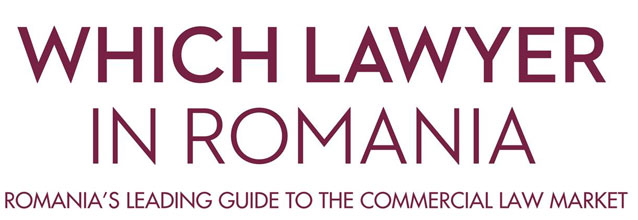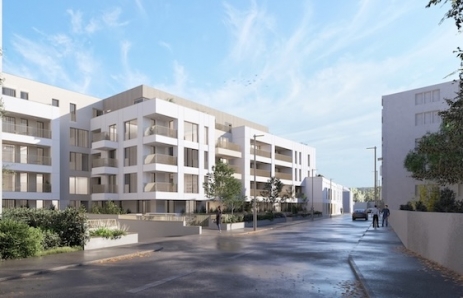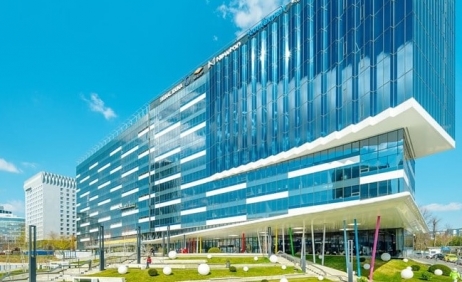
Last years’ Cinderella, the real estate sector, changed the shabby clothes in 2013 and promises to turn into a princess courted by investors. It will not be as charming and attractive as in the period of economic boom when it was rather a chimera, but instead, it will be real and thus, speculative investment will no longer arise.
The unexpected GDP growth last year has favorably influenced a sector which was strongly troubled by the recession, and reawakened investors’ appetite for the Romanian market which has been left aside in the post-crisis period.
“Romania is back on the map for foreign investors, even investment funds, mainly because it is a market with a more attractive risk-return profile”, says Cristiana I. Stoica, from Stoica & Asociatii. Capital inflows into the domestic property market, as well as in the Central and Southeastern European region are therefore expected to come, as proceeds in developed and mature markets are no longer inviting enough for investors. “The yield compression in the neighbouring (and more mature) markets – the likes of Poland and Czech Republic – will certainly drive investors to Romania”, says Razvan Gheorghiu-Testa, Partner of Tuca Zbarcea & Asociatii. The change of attitude is further emphasized
by Cristiana I. Stoica, Founding Partner of Stoica & Asociatii who has noticed a different approach in 2013: “In the course of 2013,
a number of investors that were cold towards Romania for the past few years
became more interested in seeking opportunities to allocate capital here”. This
translated into increased prospecting activity, leading to numerous acquisition
negotiations which were initiated, some of them being later materialized.
The change of attitude is further emphasized
by Cristiana I. Stoica, Founding Partner of Stoica & Asociatii who has noticed a different approach in 2013: “In the course of 2013,
a number of investors that were cold towards Romania for the past few years
became more interested in seeking opportunities to allocate capital here”. This
translated into increased prospecting activity, leading to numerous acquisition
negotiations which were initiated, some of them being later materialized.
After a favorable year during which the real estate sector has gradually returned to the spotlight, 2014 confirms the upward trend, the investment figures announcing the best year since 2011 on the Romanian market. Transactions completed only in the first quarter of 2014 exceeded the investment volume recorded during the whole previous year. Thus, according to the Bucharest City Report by Jones Lang LaSalle, the combined value of deals concluded in Q1 2014 was estimated at nearly €340 million, while the total volume in 2013 came to approximately €330 million.
“There are, indeed, positive signs for the real estate market, and 2014 marked a revival which has long been expected by local and international players”, also observes Razvan Gheorghiu-Testa.
This year’s great start in the property field was triggered by the office sector which accounted for 80 percent of these transactions, shows the research in question. Globalworth registered the largest deal which included the redemption for €210 million of the BOB and BOC office buildings along with the Upground Towers, a residential space also comprising a retail area. The real estate investment company controlled by Ioannis Papalekas additionally purchased Tower Center International in a transaction reaching €58 million. Also, the acquisition of Innovation Logistic Park by Secure Property Development and Investment is the first important deal as regards industrial property transactions carried out in Bucharest since early-2011.
The €220 million financing agreement signed by AFI Europe for refinancing AFI Palace Cotroceni is worth mentioning, as well, albeit it is included into a distinct category. Provided by a consortium comprising Deutsche Pfanbriefbank, Erste Group Bank and Raiffeisen Bank, the real estate loan is one of the year’s largest in Central Eastern Europe, as well as the largest domestic transaction of this kind in the past few years.
New Europe Property Investment (NEPI) remains the most active player in the real estate industry, dominating the market in the retail area where it concluded several deals, among which the acquisition of City Park Mall in Constanta for €81 million, last year’s largest transaction, or the Lakeview office building transferred to the portfolio of the South African investment fund for €62 million. Apart from other retail acquisitions in secondary cities such as Deva or Drobeta Turnu-Severin completed in 2013, NEPI is also involved in the development of the Mega Mall Shopping Center project in Bucharest, as a partner of Real4You.
 As the property market is becoming a more
appealing business environment, there is a broader range of investment opportunities.“The most interesting developments are happening in the areas of non-performing
loan and collateral portfolios of banks”, says Daniela Nemoianu, Managing
Partner of NTMO Attorneys at Law, foreseeing a growing number of transactions
in the following years. Investment opportunities as regards distressed
commercial projects generate some interest, as Bryan Jardine, Managing Partner
of Wolf Theiss, also notices: “Because of the boom, there is a lot of
distressed projects out there and the banks in some instances are sitting on
distressed portfolio”.
As the property market is becoming a more
appealing business environment, there is a broader range of investment opportunities.“The most interesting developments are happening in the areas of non-performing
loan and collateral portfolios of banks”, says Daniela Nemoianu, Managing
Partner of NTMO Attorneys at Law, foreseeing a growing number of transactions
in the following years. Investment opportunities as regards distressed
commercial projects generate some interest, as Bryan Jardine, Managing Partner
of Wolf Theiss, also notices: “Because of the boom, there is a lot of
distressed projects out there and the banks in some instances are sitting on
distressed portfolio”.
For the retail segment, the new residential market in particular, 2013 was the post-crisis most dynamic year, as indicates Colliers’ Romania Research and Forecast Report released in January 2014. “Most frequent transactions these days are carried out in the retail sector, mainly residential buildings, yet not so large projects, located in relatively central urban areas and with medium-luxury finishes”, confirms Mircea Jinga, Partner of SCA Jinga & Asociatii.
Driven by the Prima Casa programme, demand got stronger on a market where prices have continued the decline, dropping by 3 percent year-on-year to an average of €890/sqm. Yet, as the minimum threshold has been already reached, no further reduction is envisaged, 2014 being expected to at least preserve last year’s prices, according to the mentioned study.
Deliveries included both new projects such as Adora Urban and additional phases in existing ones like Cosmopolis, Militari Residence or Optima Project and with an increasing demand this year, the residential stock will continue growing. Future developments will maintain the same direction, as new projects are to be launched, as well as already inaugurated successful projects will be expanded. Nevertheless, the common issue, namely the difficulty in obtaining, financing hinders the development of such projects, as Alexandru Reff, Partner of Reff & Associates SCA explains.
Although some say saturation is not far when it comes to shopping centers, this retail area has been consistently developing over the past years, culminating with three major openings in Q4 2013 when Promenada Mall in Bucharest, AFI Palace Ploiesti and Shopping City Galati were inaugurated. Hence, according to Colliers’ data, the traditional retail stock came to about 2.2 million sqm at the end of 2013, with no significant deliveries expected for 2014.
There are two, though, both Nepi’s projects: Vulcan Value Center in Bucharest valued at nearly €28 million and Targu Jiu Shopping City, a retail space estimated at €4.1 million. In spite of a very small retail supply this year, outlooks are pretty promising, as there are projects of more than 300,000 sqm in early building stages or planned to start this year so that the coming years will bring a significant growth in supply, shows the Colliers’ report.
In addition to new developments, the retail real estate industry has seen some important transactions this year, either closed or in advanced stages.
“There is a general trend to develop mix use portfolios and in this context we have seen again major players acquiring new properties and shifting their interest to retail. Several “major league players” are continuing to expand, while new players enter the market, so we may soon also notice “portfolio exits”, compared to the usual stand alone deals we have seen recently”, explains Vlad Tanase, Senior Associate at NNDKP.
The Do-It-Yourself market has been very busy in the first half of the year with Praktiker’s retail chain taken over by Search Chemicals, a company controlled by Turkish businessman Omer Susli and bauMax announcing the sale of the 15 domestic stores to French-based Adeo Group, which also owns Leroy Merlin. Following the acquisition of Metro Group’s Real operations in Romania, Auchan went forward and reached an agreement for purchasing 12 of the corresponding retail spaces, a transaction coming to some €280 million, say market sources.
Also, the indebted Vitantis Shopping Center is in the final phase of selling to Revetas Capital by investment fund Equest Balkan Properties. In fact, troubled projects, as this one which has debts exceeding €44 million, generate some activity in the real estate market, and, consequently, opportunities for investors ready to give them a chance.
“We are seeing enquiries coming in from some large institutional investors and funds and such that are really interested to look at opportunities. They are prepared to buy projects they feel may have some value and with the proper management could be turned around and could generate nice returns”, says Bryan Jardine, Managing Partner of Wolf Theiss, when referring to such projects.
While the Romanian office market has been confounded for the Bucharest market for years, its expansion is eventually visible in other major cities across the country. Cluj-Napoca receives the largest office project in Romania, except Bucharest, with the inauguration of the first phase of 19,000 sqm of the 54,000 sqm in The Office Cluj, developed by NEPI in partnership with local investors.
 In spite of other projects under way, the
capital city is still the most representative as regards the office property
segment, both considering the transactional activity and the projects which
wait to be launched or are close to completion. “There is strong indication
that a number of transactions involving income producing assets (mainly office
buildings) are in the pipeline and will materialise no later than Q2/2015.
Reputable developers have completed and also fully leased their respective
office buildings, so that there are some very attractive assets on the market", explains Razvan Gheorghiu-Testa, Partner of Tuca Zbarcea & Asociatii.
In spite of other projects under way, the
capital city is still the most representative as regards the office property
segment, both considering the transactional activity and the projects which
wait to be launched or are close to completion. “There is strong indication
that a number of transactions involving income producing assets (mainly office
buildings) are in the pipeline and will materialise no later than Q2/2015.
Reputable developers have completed and also fully leased their respective
office buildings, so that there are some very attractive assets on the market", explains Razvan Gheorghiu-Testa, Partner of Tuca Zbarcea & Asociatii.
Last year, 116,000 sqm added up to the modern office stock in Bucharest, with 80 percent of the office space supplied delivered in the Barbu Vacarescu – Floreasca area, as per the previously indicated Colliers research.
The largest office building to be delivered this year in Bucharest, the Czech company S Group Holding’s Green Gate has been finalized, its 31,000 sqm gross leasable area added to about 23,000 sqm of modern office stock in two other projects Hermes Business Campus and the extension of Moravia Center. The remainder of the year will bring new deliveries such as AFI Park 2, or Green Gate which are scheduled for completion in 2014.
With the latest deliveries increasing the office stock, mainly consisting of A-Class buildings, or the projects which are under development, the market has seen higher activity in terms of leasing operations. After the pre-lease of Electronic Arts in AFI Park 2 (12,000 sqm) or the renewal of HP in Novo Park (26,000 sqm), one of the major transactions recorded in 2013, Vodafone accounts for 2014’s most important transaction of its kind up to this point. The mobile operator rented 16,000 sqm in Bucharest One, the office tower developed by Globalworth Real Estate Investments which is to be completed in Q4 2015. Another important lease agreement concerns another telecom company, Orange Romania, which will occupy 13,700 sqm in the first of the three 12-storey office buildings in Skanska’s Green Court.
The IT&C sector has again been the most active in terms of net demand last year, and there are no changes in this regard envisioned in the near term, as explains Vlad Tanase, Senior Associate at NNDKP: “The IT&telecom industry has been in a continuous ‘boom’ over the past three years, hence we could witness a constant demand for office spaces coming from this sector”.
As the net take-up picked up in 2013, according to Colliers’ report, this direction is expected to be maintained under the current market conditions which create favorable premises for further growth in demand stimulated by expansions or new entries.
“Many investors see Romania and especially Bucharest these days as the new ‘hot place to be’ from the perspective of real estate investments in Central and South East Europe. The yields in developed markets are becoming less and less attractive for investment funds in terms of return. Therefore, emerging economies like Romania tend to become the perfect alternative”, says Vlad Tanase.



 September 29, 2014 10:33
September 29, 2014 10:33 










